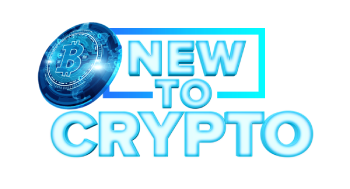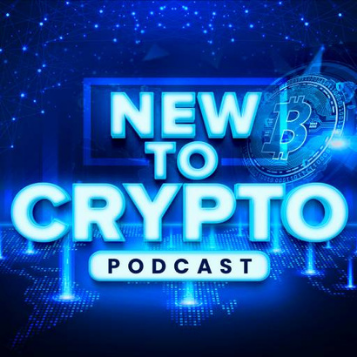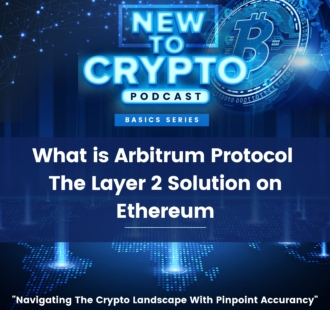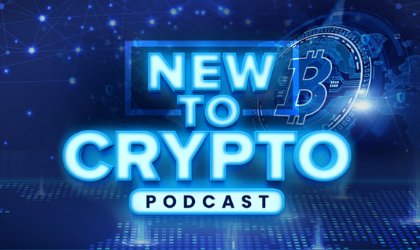0:00
Welcome to the New to Crypto Podcast designed to guide you through the crypto landscape with pinpoint accuracy created for the new and intermediate crypto investor. Join your host Crypto Travels Michael as he takes you through the different facets of getting started and succeeding in your crypto journey. New to crypto podcast brings you new episodes daily Monday through Friday with surprise bonus episodes sometimes on the weekend. Let me ask you, are you new to crypto and don’t know where to start? Are you more experienced but have questions? Then you’re in the right place. This podcast is designed for you coming at you from the Trading Center and the Lifestyle Dezign Studio. Here’s your host Crypto Travels Michael.
Hey, welcome to today’s episode. I’ve been traveling lately, and today I’m coming at you from Las Vegas. So from here on the strip in Las Vegas, let’s jump into today’s episode. It’s all about Arbitrum. So what is the Arbitrum protocol? Well, that’s what we’re gonna dive into. Arbitrum is essentially a layer two solution that has been designed to enhance the capabilities of Ethereum smart contracts. It does so by adding additional privacy features and increasing the speed and scalability. The Arbitrum protocol aims to reduce most of the downsides and challenges that have come on the Ethereum network. Essentially, Arbitrum allows Ethereum users to transact outside of the core network. Since its launch, Arbitrum has been breaking records. With each passing week and month, the total value lock has increased significantly on the platform, and today the total value locked is $2.35 billion. So let’s break down some of the features and benefits because it’s unique and different from other protocols.
Arbitrum offers enhancement to Ethereum scalability. Other protocols have attempted to do the same, but Arbitrum does not operate directly with the Ethereum network. It is an individual layer, which relieves the transaction pressure on the main blockchain. In addition, Arbitrum works with the same programming language as Ethereum. Developers of dapps do not need to learn a new language to work with Arbitrum, and they also have a well developed ecosystem. One important feature of the Arbitrum protocol is its ecosystem. Thanks to its user friendly roll up tech, with the support of its ecosystem, Arbitrum is available, always working with different kinds of dapps and projects. These base projects within the Arbitrum’s well developed ecosystem include: Uniswap, Dodo, Sushi and many more. And let’s break down the ETH bridge integration. Arbitrum employs something called ETH bridge, a series of smart contracts that connects to the networks of both protocols. This is their own virtual machine. These networks constantly communicate information between the two, anything that happens on one is recorded on the other, so Ethereum can verify all activity. Well, let’s also unpack the efficiency.
Arbitrum offers a way of compressing information. It treats several contracts into a specific single object, which makes everything easier and faster. In addition, Arbitrum sends only the relevant information to Ethereum. This avoids the need to communicate entire blocks. While not requiring validation to all nodes. Arbitrum is comparable to Bitcoin’s Lightning Network, if you will. The goal is to make smart contracts simpler and faster. Therefore, it is a promising solution for dapps on Ethereum, such as games and other applications. Let’s break down the lower prices for smart contracts for a moment. Arbitrum is trying to eliminate the costs of smart contracts on Ethereum. However, this is a long term goal, and for now, it is expected to reduce fees. These fees are cheaper because of their simplicity, they are just for storing and processing the information generated. Arbitrum will allow miners to be paid only when a transaction is necessary. In other words, several could be included into a single payment simultaneously, that would reduce the cost and time needed to operate on the Ethereum network. It should be noted that Arbitrum is not yet operating at full capacity, the speed of the transaction will come into play only when there is more demand than capacity.
Let’s break down the Chainlink integration. This integration is what allows Arbitrum to function as it does. The node operators in Chainlink also function as validators of the Arbitrum protocol. Chainlink contains one of the largest lists of node operators. It is also one of the most secure networks to do the job. Basically, these operators can be outsourced to reduce costs and increase transaction speed. Chainlink is ideally suited to support Arbitrum given its secure and flexible framework, it’s growing number of high quality node operators who are already securing hundreds of millions of dollars in US USD value, and the long term viability as a standard layer. In the web 3.0 protocol stack, Chainlink Oracles allow smart contracts to securely import data from the real world and execute actions on external systems, both of which are critical functions needed by many of today’s most interesting dapps. This transforms Arbitrum, into a network of smart contracts compatible with real information, real world information.
But Oracles have far more functionality than facilitating data messaging between separate systems, they become even more powerful when they not only transport raw data, but trustless leap process and perform scalable computations on that data using a trust minimized form of computation, like Arbitrum. So what are some of the disadvantages? Well, it’s not fully decentralized yet, because it’s a newer project. Although being fully decentralized, has always been part of Arbitrum’s plan. It should be noted that they are not there quite yet. The Arbitrum team at this point has a fair share of control over the network and has taken an approach that is fairly congruent with that of other scale out solutions, such as Polygon and Optimism. who founded Arbitrum? Well, Arbitrum was co-founded by Ed Felton, who is a former deputy and US Chief Technology Officer in the Obama White House and a longtime professor at Princeton University. He started working on Arbitrum while at Princeton University, where he met his co-founders, Steve Goldfeder and Harry columnar, the three detailed to Arbitrum technology. In a research paper while at Princeton that was published in 2018, Arbitrum was officially born, why the three we’re at Princeton with a mission to scale Ethereum and bring it to the masses. I hope today’s episode has shed some light on you for Arbitrum. Is definitely an interesting project and it’s really popular in the crypto space. Check out the website for today’s episode, with resources and links so you can research more. And definitely like and subscribe to the podcast. I’m working hard to put out quality content for you on a daily basis. And I have my team working on a lot of excellent things here for the future. Until tomorrow, make it a great day.
Thanks for tuning in to New to Crypto Podcast. If you liked the episode, be sure to follow and subscribe. You can listen to every episode on all major platforms to have an interest in being on the show or one advertising reach out at newtocrypto.io. Head over to our site newtocrypto.io to access the resources mentioned in each episode. Until next time, remember to navigate the crypto landscape with pinpoint accuracy.











![Learn About How Internet Computer is Creating a New Decentralized Internet on the Blockchain [Explained]](https://newtocrypto.io/wp-content/uploads/2021/11/Learn-About-How-Internet-Computer-is-Creating-a-New-Decentralized-Internet-on-the-Blockchain-Explained-300x300.jpg)


